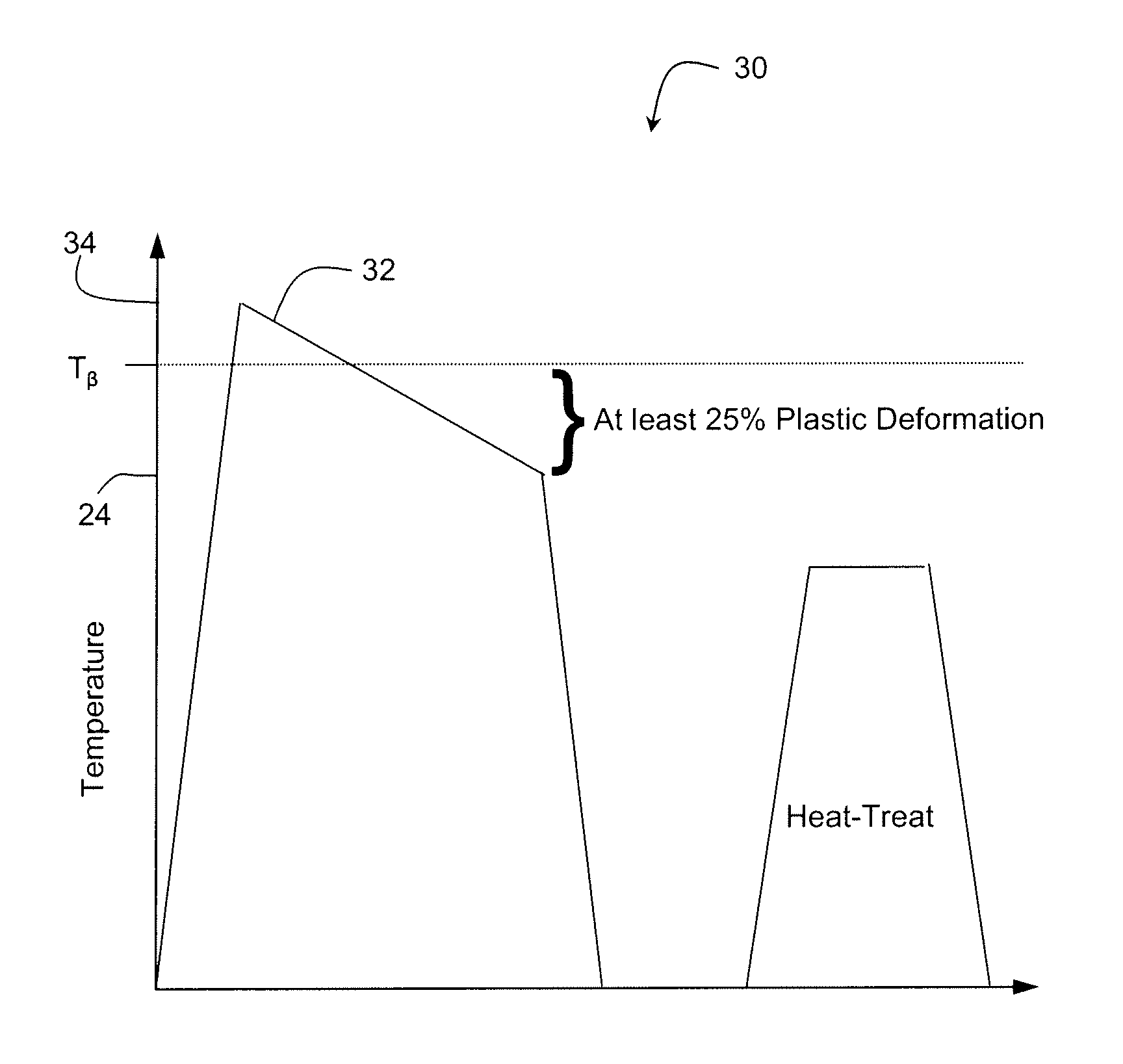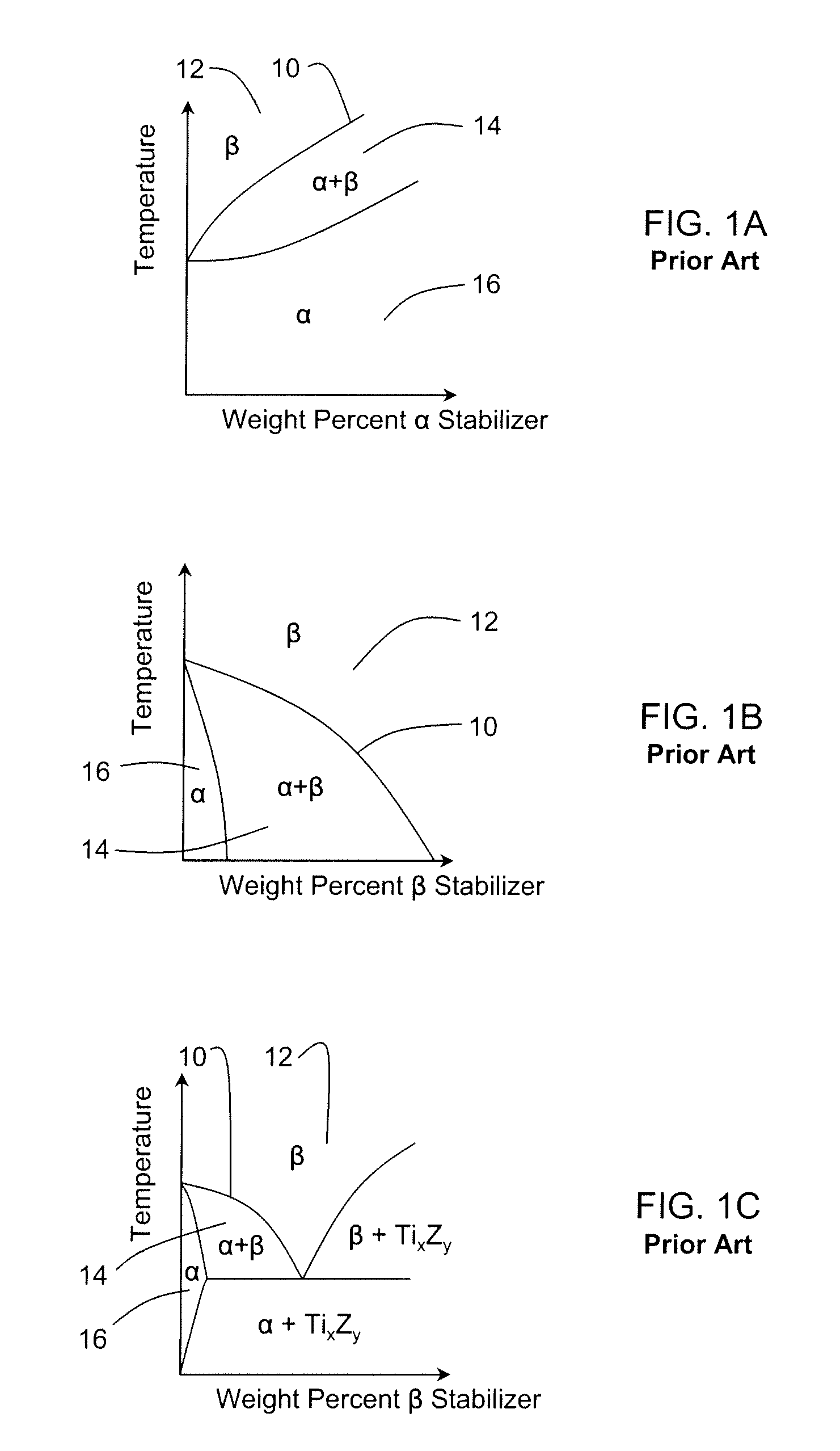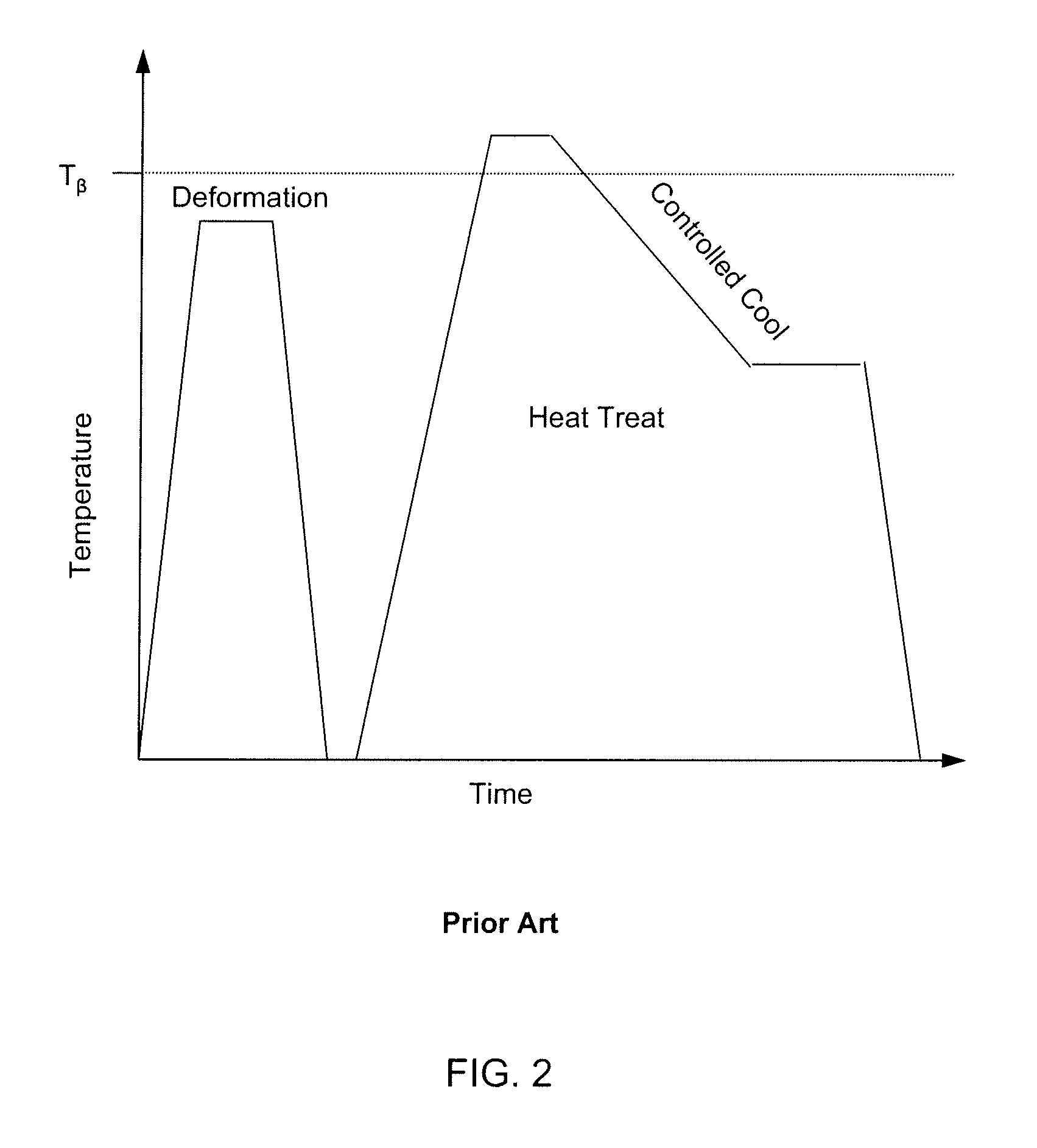Production of high strength titanium
a titanium alloy and high strength technology, applied in the field of titanium alloy production methods, can solve the problems of reducing the toughness of these alloys, reducing the toughness of prior art thermomechanical processing steps used to produce titanium alloys with high strength and high toughness, and reducing the area. , to achieve the effect of increasing the strength and toughness of a titanium alloy, reducing the area and reducing the area
- Summary
- Abstract
- Description
- Claims
- Application Information
AI Technical Summary
Benefits of technology
Problems solved by technology
Method used
Image
Examples
example 1
[0066]A 5 inch round billet of Ti-5Al-5V-5Mo-3Cr (Ti 5-5-5-3) alloy, from ATI Allvac, Monroe, N.C., was rolled to 2.5 inch bar at a starting temperature of about 1450° F. (787.8° C.), in the alpha-beta phase field. The beta transus temperature of the Ti 5-5-5-3 alloy was about 1530° F. (832° C.). The Ti 5-5-5-3 alloy had a mean ingot chemistry of 5.02 weight percent aluminum, 4.87 weight percent vanadium, 0.41 weight percent iron, 4.90 weight percent molybdenum, 2.85 weight percent chromium, 0.12 weight percent oxygen, 0.09 weight percent zirconium, 0.03 weight percent silicon, remainder titanium and incidental impurities. The final working temperature was 1480° F. (804.4° C.), also in the alpha-beta phase field and no less than 400° F. (222° C.) below the beta transus temperature of the alloy. The reduction in diameter of the alloy corresponded to a 75% reduction in area of the alloy in the alpha-beta phase field. After rolling, the alloy was air cooled to room temperature. Samples...
example 2
[0069]Specimens of Sample No. 4 from Example 1 were cross-sectioned at approximately the mid-point of each specimen and Krolls etched for examination of the microstructure resulting from rolling and heat treating. FIG. 7A is an optical micrograph (100×) in the longitudinal direction and FIG. 7B is an optical micrograph (100×) in the transverse direction of a representative prepared specimen. The microstructure produced after rolling and heat treating at 1250° F. (677° C.) for 4 hours is a fine α phase dispersed in a β phase matrix.
example 3
[0070]A bar of Ti-15Mo alloy obtained from ATI Allvac was plastically deformed to a 75% reduction at a starting temperature of 1400° F. (760.0° C.), which is in the alpha-beta phase field. The beta transus temperature of the Ti-15Mo alloy was about 1475° F. (801.7° C.). The final working temperature of the alloy was about 1200° F. (648.9° C.), which is no less than 400° F. (222° C.) below the alloy's beta transus temperature. After working, the Ti-15Mo bar was aged at 900° F. (482.2° C.) for 16 hours. After aging, the Ti-15Mo bar had ultimate tensile strengths ranging from 178-188 ksi, yield strengths ranging from 170-175 ksi, and KIc fracture toughness values of approximately 30 ksi·in1 / 2.
PUM
| Property | Measurement | Unit |
|---|---|---|
| Temperature | aaaaa | aaaaa |
| Temperature | aaaaa | aaaaa |
| Temperature | aaaaa | aaaaa |
Abstract
Description
Claims
Application Information
 Login to View More
Login to View More - R&D
- Intellectual Property
- Life Sciences
- Materials
- Tech Scout
- Unparalleled Data Quality
- Higher Quality Content
- 60% Fewer Hallucinations
Browse by: Latest US Patents, China's latest patents, Technical Efficacy Thesaurus, Application Domain, Technology Topic, Popular Technical Reports.
© 2025 PatSnap. All rights reserved.Legal|Privacy policy|Modern Slavery Act Transparency Statement|Sitemap|About US| Contact US: help@patsnap.com



